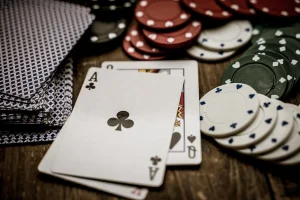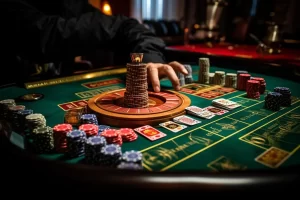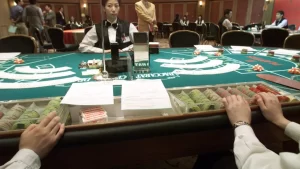Cultural Variations in Baccarat Gameplay Across Asian Markets

Walk into any casino from Macau to Manila, and you’ll hear it. The quiet shuffle of cards. The collective intake of breath around a table. The soft murmur in Cantonese, Mandarin, or Vietnamese. This is the sound of Baccarat, the undisputed king of Asian casino floors.

But here’s the thing. While the basic rules of the game are a universal constant, how it’s played, perceived, and even felt changes dramatically from one culture to the next. The game itself becomes a canvas for local customs, superstitions, and social rituals. Let’s pull up a chair and explore this fascinating world.
Macau and Mainland China: Where Baccarat is a Cultural Pillar
In Macau, the gaming capital of the world, Baccarat isn’t just a game; it’s the economic engine. Seriously, it accounts for a staggering portion of the revenue. The vibe here is intense, high-stakes, and deeply rooted in Chinese culture.
The Ritual of Superstition
Forget cold, hard probability for a moment. In Chinese culture, luck is a tangible force, and players do everything in their power to court it. This is where the cultural variations in Baccarat superstitions really come alive.
- The Number 4 is Feared: The word for “four” sounds like the word for “death.” You’ll see players avoiding it at all costs—no betting on the fourth seat, no betting units of four.
- The Number 8 is Cherished: Conversely, “eight” sounds like “prosperity.” It’s considered incredibly lucky. Betting amounts and seat choices often revolve around this auspicious number.
- Blowing on the Cards: A common sight is a player gently blowing on their cards before turning them over. The belief? That you can literally blow away bad luck and usher in the good.
The tables themselves are designed for this. Many feature a “road map” or “bead road,” a complex chart that tracks previous hands. Players and “table captains” (more on that in a second) will study these patterns with the focus of a stock market analyst, looking for trends they believe will predict the future.
The “Table Captain” Phenomenon
This is a uniquely Macau and high-roller thing. A “table captain” is a dominant, often high-stakes player who makes the betting decisions for the entire table. Other players will follow their lead, believing in their luck or skill. It creates a communal, almost hierarchical, dynamic that you just don’t see in the West.
Vietnam: High-Energy and Communal Play
Cross the border into Vietnam, and the energy shifts. The game is just as beloved, but the atmosphere is louder, more animated, and fiercely communal. It’s less about silent contemplation and more about shared experience.
Vietnamese players are known for their vocal encouragement and… well, their vocal disappointment. You’ll hear shouts, laughter, and groans ripple through the room. The game is a social event, a place to see and be seen.
Superstition is still a major player, of course, often blending traditional Vietnamese beliefs with Chinese influences. You might see players touching a lucky person for good luck or avoiding certain actions they deem unlucky. The tactile, social nature of the gameplay is paramount.
Singapore and Malaysia: A Blend of Tradition and Modernity
In the sleek, integrated resorts of Singapore, Baccarat maintains its prestige but with a more refined, international flavor. The cultural variations in Baccarat gameplay here are subtler, a blend of Eastern tradition and Western efficiency.
The superstitions are still present—you can’t escape the power of numbers in this part of the world—but they often feel more subdued. The play can be just as high-stakes, but the overall atmosphere is one of controlled luxury. It’s a place where a billionaire from Shanghai can play alongside a tourist from London, and while their approaches might differ, they’re united by the game.
In Malaysia, with its significant ethnic Chinese population, the gameplay closely mirrors that of Macau, but often with local twists influenced by Malay and Indian customs, creating a unique cultural fusion at the table.
How Culture Shapes the Very Tables
These cultural preferences aren’t just abstract; they directly influence the physical setup of the game. Casinos meticulously tailor their offerings.
| Market | Preferred Table Type | Key Cultural Driver |
| Macau / China | Non-commissioned Baccarat (aka “No-Commission Baccarat”) | Speed and perceived value; avoids the 5% commission on Banker bets, which is seen as a barrier. |
| Vietnam | A mix of Commission and No-Commission tables | Focus on high-energy, fast-paced action; communal betting. |
| Singapore | A balance of both, with high-limit rooms favoring traditional commission tables. | Caters to an international clientele; emphasizes luxury and choice. |
The Digital Shift: Online Baccarat’s Cultural Echo
And now, with the rise of online casinos, you’d think these cultural nuances would fade. Honestly, the opposite is happening. Game developers are hyper-aware of these regional preferences.
Live dealer online Baccarat for Asian markets almost always includes the “road map” display. The dealers are often fluent in Mandarin or Cantonese. The UI might be designed with lucky red and gold colors. They are, in effect, recreating the cultural ecosystem of the physical table in a digital space. It’s a fascinating adaptation.
A Game, A Ritual, A Mirror
So, what’s the real takeaway here? Baccarat in Asia is more than a gamble. It’s a social activity, a ritual for inviting fortune, and a powerful expression of cultural identity. The next time you see a Baccarat table, whether in person or online, look closer.
Notice the patterns people follow. Listen to the language of luck they speak. You’re not just watching a card game. You’re witnessing a centuries-old dance between chance, strategy, and the deeply human desire to shape one’s own destiny. And that’s a game with stakes far higher than any chip stack.








